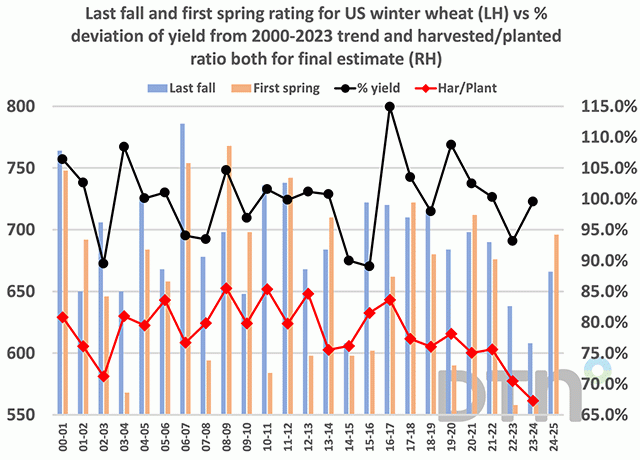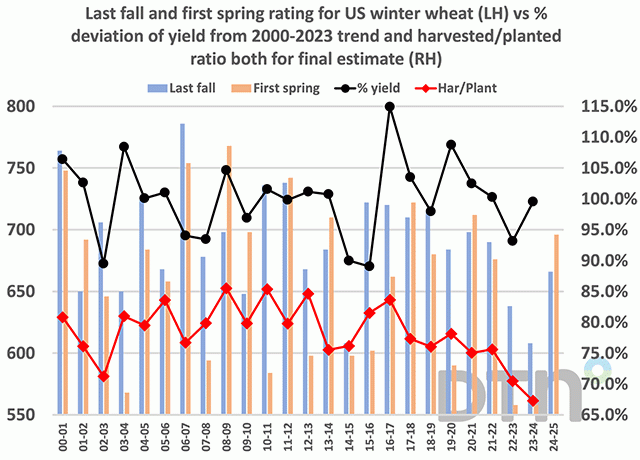Fundamentally Speaking
2022 US Corn Output
The most bullish element in last week's USDA reports was 2022 U.S. corn planting intentions at 89.5 million acres vs. the 92 million acres trade estimate of intended corn area.
This is the third lowest in 10 years and very surprising with the trade completely missing this one with lowest estimate at 89.7 million acres.
Notwithstanding a soybean-corn ratio that was in favor of corn, one has to say the fact that fertilizer prices are double or even triple year ago levels prompted farmers to plant more soybeans, a cheaper crop to put in the ground.
Only CO, SD, and TX of the top 18 growing states are seeing higher acreage than a year ago with seedings in the southeast and Delta down sharply, depriving the market of early harvest corn.
Sobering is fact that even with good weather, final acreage unlikely to move much above the 89.5-million-acre figure and if we have a wet spring like in 2019 or 2020, actual seedings could be below that, while the bar on yields is already set very high at 181.0 bushels per acre (bpa), a full 4.0 bpa above last year's record.
P[L1] D[0x0] M[300x250] OOP[F] ADUNIT[] T[]
Along these lines this graphic shows the 20-year average and 20-year trend harvested/planted ratio for the top 18 producing corn states and the U.S. on the left-hand axis vs. the 20-year trend yields in bushels per acre also for the top 18 producing corn states and the U.S. on the right-hand axis.
A simple 20-year trend of U.S. corn yields comes out to 178.0 bpa for 2022 with the 20-year average harvested to planted ratio at 91.2%, while this year's U.S. trend figure for that ratio is 91.8%.
We also looked at each of the top states harvested to planted ratio 20-year average and trend and they were usually close, though weather can make a difference as good conditions result in a higher ratio while bad conditions result in more abandonment or corn that is cut for silage, lowering the ratio.
Over the past 20 years, the amount of corn produced in those 18 states has averaged about 94.3% of total national output ranging from a high of 95.6% in 2006 to a low of 92.1% in the 2012 drought year.
The ratio has trended lower over time and this year is projected at 93.52%.
Using first the average harvested to planted ratio for the top states multiplied by last week's individual state corn planted area figure multiplied by each state's 20-year trend yield, the sum of the 18-state corn production is 13.624 billion bushels (bb)
Assuming that is 93.52% of total U.S. output, that results in total national production of 14.569 bb and a 178.5 bpa yield.
Now using the trend average harvested to planted ratio for the top states multiplied by last week's individual state corn planted area figure multiplied by each state's 20-year trend yield, the sum of the 18-state corn production is 13.731 bb.
Assuming that is 93.52% of total U.S. output, that results in total national production of 14.689 bb and a 178.6 bpa yield.
The point here is the 20-year trend of U.S. corn yields at 178.0 bpa or calculating the individual state production using either the average or trend harvested to planted ratio multiplied by the 20-year trend yield results in a derived U.S. yield of 178.5 bpa or 178.6 bpa, all of which are well below the USDA 181 bpa figure they are using per their Ag Outlook Forum projections.
Hence the corn market is not only looking at a 2022 planted figure far below what was anticipated or needed but a USDA estimated yield that on the surface looks very optimistic.
This in addition to a myriad of positive demand price drivers including less South American production than had been expected and the loss of Ukrainian corn exports and production.
(c) Copyright 2022 DTN, LLC. All rights reserved.






Comments
To comment, please Log In or Join our Community .